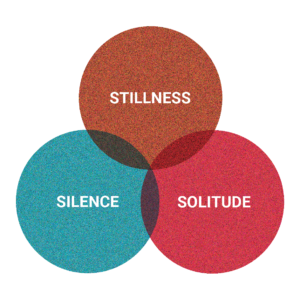 The 3 Centers of Intelligence – Head Center, Heart Center and Body Center – form a basis of the 20th century mystic, philosopher and teacher, G. I. Gurdjieff, brought to the Fourth Way teachings and to the Enneagram. This blog describes one way among many ways that Centers of Intelligence can be useful and practical in developing relationships.
The 3 Centers of Intelligence – Head Center, Heart Center and Body Center – form a basis of the 20th century mystic, philosopher and teacher, G. I. Gurdjieff, brought to the Fourth Way teachings and to the Enneagram. This blog describes one way among many ways that Centers of Intelligence can be useful and practical in developing relationships.
Christopher L Heuertz in his recent book, “The Sacred Enneagram,” has a section on contemplative practices for the 3 Enneagram types within each Center of Intelligence. Intuitively, what Heuertz suggests makes sense. Practically (and amusingly), Heuertz has selected that which is the most difficult for individuals from that Center. Torture, in a spiritual sense, may be another name for this. Doing what is most difficult for us can be the most highly transformative.
Body Center Types: Being in Stillness
The Body Center of Intelligence is also known as the Action Center. It is the place where movement and delivery occur, where 8s move to action big and fast when they feel vulnerable, anxious, excited or just don’t know what else to do. 9s also like action, but they also like inaction. However, they want to be the ones to choose: action, no action, some action. 1s are very active and seem to be continuously busy doing something. Imagine all three types being in total stillness, or as still as they can be and for over periods of time: minutes, hours, days, weeks.
Being in Stillness | Being in stillness for any period of time can be difficult for everyone, no matter what their Enneagram type. To be still begins and ends in the body; the best way to practice this is through the body through somatic awareness. Instead of thinking “Be still, be still,” give yourself something to engage your stillness. Trying to be still is more than likely going to want to make you move instead of be still. One somatic practice is to put your attention to any part of your body you want, and then keep your attention there without forcing it. Then let your attention spread to adjacent areas of your body. Notice your somatic experience and allow your somatic attention to keep spreading. If you want, set a timer, starting at 5 minutes. Each day increase the time period to two-five minutes longer.
Heart Center Types: Being in Solitude
The three Heart Center Types, 2, 3 and 4, are rarely alone. If they are alone, they might be texting, emailing, talking on the phone, or even just thinking about people. None of this is being alone in solitude. Without other people as a frame of reference, 2s, 3s, and 4s may not have a solid grasp on who they are.
Being in Solitude | Being in solitude is simply being with yourself and not in any contact whatsoever with other people and doing so consciously and for an increasingly extended period time.
Head Center Types: Being in Silence
While we all have a lot of chatter going on in our heads, it is most obvious in the Head Center types 5, 6, and 7. 5s are thinking about information and strategies, often strategies to maintain their energy form being depleted. 6s are thinking about problems to solve, the different paths that can be taken, risk assessments, and general or specific worries. 7s are thinking about exciting ideas, new plans and possibilities, and innovative approaches.
Being in Silence | Being in silence is about internal silence by stopping the incessant inner chatter. Usually this involves observing the chatter, slowing down the chatter, and then emptying the mind so there is silence. Silence doesn’t happen immediately; it is a process. What helps is to be alone so the chatter is easier to notice combined with not doing activities that stimulate the inner conversation.
Ginger Lapid-Bogda PhD, the author of six best-selling Enneagram-business books, is a speaker, consultant, trainer, and coach. She provides certification programs for professionals around the world who want to bring the Enneagram into organizations with high-impact business applications, and is past-president of the International Enneagram Association. Visit her website: TheEnneagramInBusiness.com. ginger@theenneagraminbusiness.com

Comments are closed.